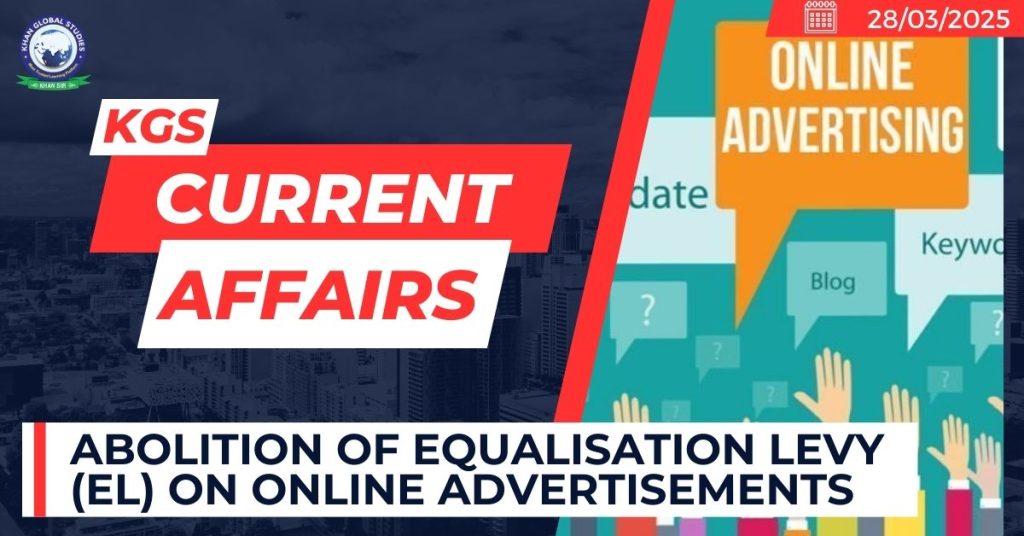Context:
Recently, the central government has proposed abolishing the 6% Equalization Levy (EL) on online/digital advertisements as part of 35 amendments to the Finance Bill, 2025.
More on the News
- Opposition slams that the move came in response to President Donald Trump’s announcement of imposing a reciprocal tax on India.
- The change will come into effect from April 1, 2025.
What is EL?
- The Equalization Levy (colloquially called ‘Google Tax’) was introduced to ‘equalise’ the tax obligations between resident and non-resident e-commerce companies.
- It is a type of direct tax levied on businesses-to-business transactions.
- The 6% levy, applicable since 2016, targets e-commerce companies earning revenue from Indian customers without having a physical presence in India.
- The levy is applicable on payments exceeding Rs 1 lakh annually made to non-resident service providers for online advertisements.
- It is not charged if the service is used for personal purposes, not for business or professional use.
- The Financial Act of 2020 expanded the scope of the equalisation levy, applying it at 2% to non-resident e-commerce operators involved in online sales of goods and services, but it was later repealed in 2024 due to strong opposition from the U.S.
Purpose of the Abolition
India’s Equalization Levy has faced criticism, especially from the United States, which has labelled the tax as “discriminatory and unreasonable” due to its impact on U.S. digital companies.
- The 6% levy has primarily affected offshore technology giants such as Google, Meta, and Amazon, which provide online advertising services in India.
- These companies have been required to withhold and remit the tax to the Indian government, making it burdensome for U.S.-based firms.
The proposed removal of the EL is seen as a step to ease trade tensions between India and the United States.
The move is aimed at improving diplomatic relations and positioning India as more accommodating during ongoing trade discussions with the U.S. for a potential trade deal.
The decision is also expected to drive more foreign investment into India’s digital sector. By making digital advertising cheaper, the government hopes to stimulate the digital economy, providing opportunities for growth and innovation.
The proposal to abolish the levy aligns with India’s commitment to the OECD/G20 Inclusive Framework, which aims to establish a fair and global taxation system for the digital economy.
Criticisms
- Experts pointed out that the Equalization Levy was always an imperfect but good solution to tax digital transactions and was primarily a temporary measure until a global consensus on digital taxation was reached.
- Equalization Levy, while controversial, was a tool for India to exert pressure on global companies (especially the issue of taxing companies that operate in India without a physical presence) and ensure they contributed their fair share to India’s tax revenue.

